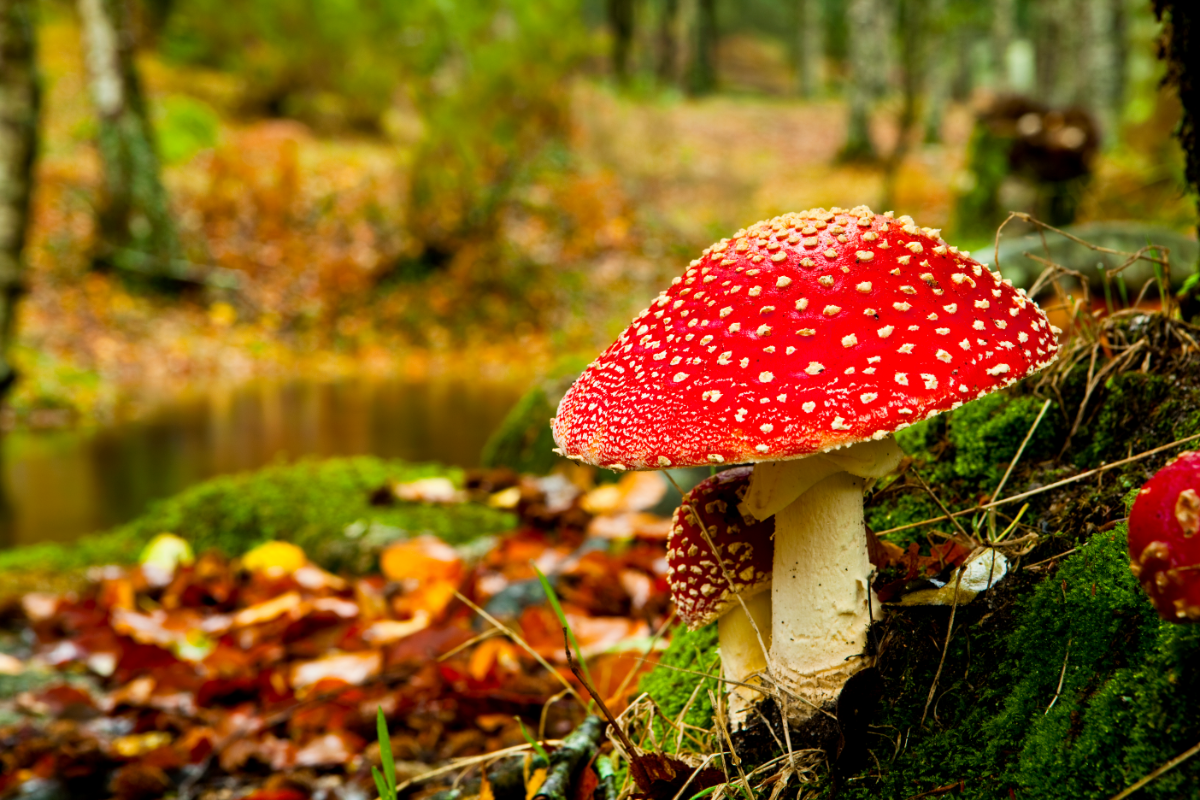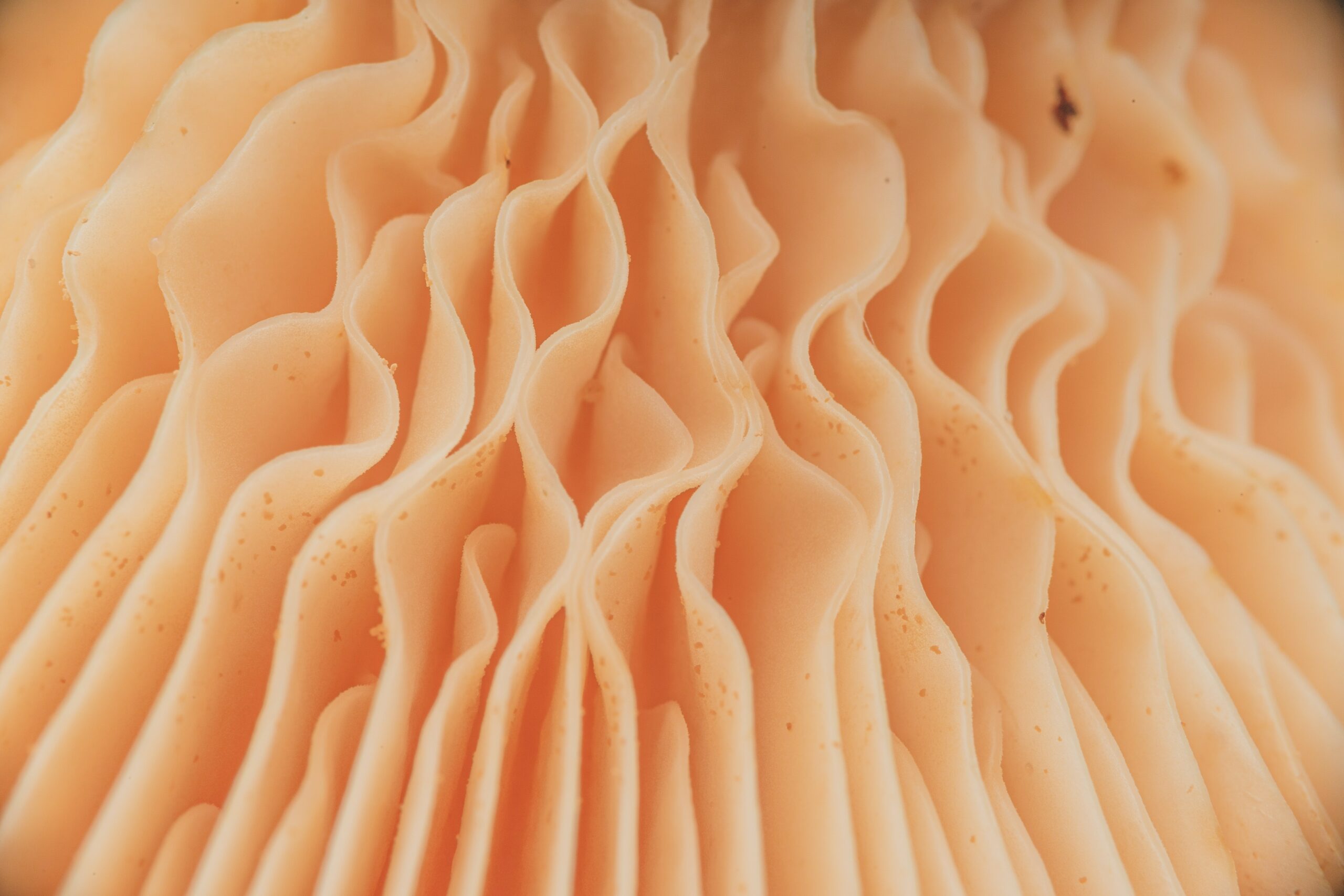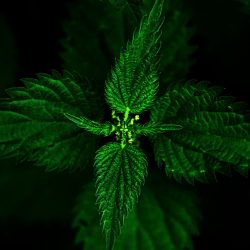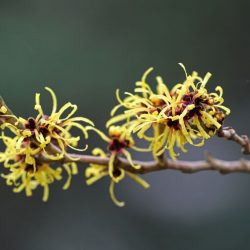Mushrooms, with their strange shapes and infinite varieties, are a source of interest for many nature lovers. However, behind their sometimes innocent appearance lie potentially deadly specimens: toxic mushrooms. This article explores the hidden dangers of mushrooms and their serious impact on health. We look at how to identify toxic mushrooms and their effects on the body. We delve into the complex world of these fungal organisms, providing crucial information on how to avoid the risks associated with their consumption. Welcome to the world of toxic mushrooms.
What is a mushroom?
Fungi are fascinating organisms that play an essential role in nature. Their diversity and importance in ecosystems make them an exciting field of biology, mycology, which is constantly evolving thanks to scientific advances.
Definition of a fungus
A fungus is a living organism distinct from the fungal kingdom. Although little known, fungi play an essential role in biodiversity, with around 5 million species, of which only 5-15% are known. They help to recycle organic matter and are indicators of soil health.
Mushrooms form symbiotic relationships with certain plants, exchanging minerals and sugars to help them survive. When picking mushrooms, it is essential to harvest the whole mushroom without cutting the stem. Choose specimens in good condition.
It is important to note that not all organisms called“mushrooms” are true fungi, as they also include Oomycetes and Myxomycetes.
The evolutionary history of fungi goes back 450 million years. They colonised various terrestrial and aquatic environments, contributing to the adaptation of the first land plants.
The term“mushroom” derives from the Low Latin“campinolius“, meaning“small products of the countryside“. The history of their classification evolved from plants to the fungal kingdom, and then to a separate kingdom.
Reproduction of fungi varies according to the group to which they belong. Some produce spores, while others form zygospores or azygospores. Ascomycetes have asci containing spores, while deuteromycetes have unknown sexual reproduction. The distinction between these groups is also based on the characteristics of their spores and mycelium.
In conclusion, fungi are fascinating and diverse organisms, essential to nature and to the balance of ecosystems. Mycology, the study of fungi, continues to evolve thanks to scientific advances, challenging our understanding of these organisms.
What is the anatomy of a fungus?
Fungi are anatomically very different from plants and algae, with unique characteristics that place them in a kingdom of their own:
- Carbon heterotrophy: Fungi are unable to produce their own nutrients through photosynthesis like plants, so they depend on other sources for their carbon. They extract organic compounds from their environment, feeding on dead matter, parasiting or forming symbioses with other chlorophyllous organisms.
- Absorbotrophy: Fungi absorb nutrients through their outer cell wall, an essential method of nutrition.
- Branched, tubular vegetative apparatus: Unlike plants, which have specialised, differentiated tissues, fungi have a branched, diffuse vegetative apparatus, with no real tissues like higher plants.
- Reproduction by spores: Fungi reproduce by producing spores, light, resistant reproductive units capable of spreading far from the parent organism to form new individuals.
- Chitinous cell wall: The cell wall of fungi is mainly composed of chitin, a carbohydrate polymer, similar to the exoskeleton of arthropods and crustaceans, illustrating an evolutionary convergence.
How are fungi classified?
Three main families structure the world of fungi according to their mode of nutrition. Saprophytes consume dead organic matter such as leaves and wood. Mycorrhizal fungi form a beneficial symbiosis with trees and plants thanks to their mycelium. Parasites, the third category, feed at the expense of other living beings, often plants or other fungi.
In mycology, the classification of fungi follows genetic progress. Two approaches predominate: classical classification and phylogenetic classification. Genetic advances have modified the classification of certain symbionts, such as lichens, which are now included among the fungi.
Fungi have specific characteristics that distinguish them from plants and algae. They do not synthesise their own sugars, preferring to extract organic compounds from their environment. They absorb nutrients via their outer wall in an absorbotrophic mode.
In 1969, botanistRobert H. Whittaker established the Fungi kingdom. This kingdom encompasses sporophore fungi and other multicellular eukaryotic organisms, including moulds, rusts, mildews, saprolegans and yeasts.
What are the roles of fungi?
Analysis of fungi reveals that they are composed mainly of water, accounting for around 90% of their structure. The remaining 10% comprises key elements such as proteins, lipids, carbohydrates, fibres and ash. This ash contains essential minerals such as potassium, sodium, phosphorus, calcium, magnesium, iron, zinc and copper. Mushrooms also have the capacity toaccumulate heavy metals from their environment.
Their carbohydrate composition includes various simple sugars, methyl pentoses, disaccharides and complex polysaccharides, notably chitin. In terms of lipids, they contain several classes of lipids rich in essential fatty acids. As far as vitamins are concerned, mushrooms offer a range of group B vitamins, vitamin C, as well as provitamins A and D, the quantities of which vary depending on the species and growing conditions.
These fungal organisms are also a significant source ofamino acids, both essential and non-essential, although their sulphur amino acid content is relatively low.
Ecological and economic impact
Fungal parasitism of trees falls into two main categories: saprophytes and lignivores. Saprophytes feed on dead trees, while lignivores consume living organic matter, specifically targeting the cellulose and lignin in trees.
Lignivorous fungi actively parasitise living trees. They cause the tree to wither and sometimes die, depending on the virulence of the fungus.
The destruction of living plant matter benefits decomposer organisms that feed on dead matter. This helps to maintain the ecosystem’s food webs. However, some fungi parasitise trees without causing major damage. They specifically target a tree family or species, exploiting their defensive weaknesses. This parasitism affects forest diversity, especially when these fungi are exotic species invading new regions.
Invasive species of fungi disrupt existing ecosystems. They compete with local species for resources, causing habitat degradation and disruption of water and mineral resources. This can even lead to the disappearance of local species unable to compete. Dutch el m disease illustrates this impact.
Medical research
Fungi play a significant role in medicine, presenting both benefits and risks for human health. Some microfungi cause infections in humans, while the toxicity of other species requires extra vigilance in the event of ingestion.
In medicine, doctors use a variety of antifungal agents, including polyenes such asamphotericin B and griseofulvin, echinocandins such as caspofungin and flucytosine, and azoles, including miconazole and ketoconazole, as well as triazoles such as fluconazole,itraconazole and voriconazole. Terbinafine and cyclopyroxolamine are also used.
Medical mycology laboratories use various techniques to diagnose fungal infections, such asdirect examination,histology,antifungals, fungal culture, serological reactions, MALDI-TOF mass spectrometry, lactophenol blue test, scotch test and Wood’s lamp.Inoculation of animals is rare.
Fungi are attracting growing interest in therapeutic research because of their metabolic diversity. Techniques such as chromatography, spectrochemistry and pharmacological studies on animals have made it possible toisolate molecules with a wide range of activities. They have pharmacological potential in a variety of fields, including antibiotic therapy, oncology, parasitology, cardiology, dermatology, endocrinology, gastroenterology, gynaecology, haematology, neuropsychiatry, pneumology, traumatology and urology.
Some fungi have shown anti-cancer properties inanti-tumour activity testson tumour grafts in vivo, by interacting with the immune system. Anticancer substances such as polysaccharides, lectins, terpenoids and cellulose fibres stimulate the production of cytokines and the proliferation of T lymphocytes, and inhibit tumour growth.
Mushroom poisoning
Mushroom picking covers the harvesting of edible mushrooms for domestic, commercial or medicinal purposes, including hallucinogenic use. Mycologists carry out this activity on excursions to identify species, while prospectors explore new markets such as cosmeceuticals, pharmaceuticals and nutraceuticals.
Excessive harvesting, often referred to as over-harvesting, can damage forest biodiversity, disrupt society and lead to serious offences such as environmental destruction. Regulations are therefore needed, including harvesting quotas per person per day, to protect ecosystems and balance mushroom harvesting with environmental conservation.
In France, the training of pharmacists in the identification of edible and toxic mushrooms has declined since the 2000s. Medical mycology, a branch of medical biology, focuses on theisolation and characterisation of fungi, particularly yeasts and filamentous fungi, from various human biological samples. This discipline seeks to determine whether a pathology has a mycological origin.
Mycotoxicology
Fungal intoxications result from theingestion,inhalation of spores or handling of higher fungi, whether wild or cultivated. Mycotoxicology studies the toxicity of fungi. The term “mycetism” refers to food poisoning caused by higher fungi that produce toxic molecules, or endotoxins, that are dangerous to humans and animals(zootoxins).
This discipline clinically explores the toxicity of drugs intended for humans and animals, as well as that of food products containing fungal organisms before they are marketed.
Mycotoxicology combines the knowledge of toxicologists, who recognise the symptoms and effects of fungal poisoning, and mycologists, who are experts in identifying fungal species. Toxicologists are not always able to identify the species involved, while mycologists are not necessarily trained to treat poisoning.
Distinguishing between edible and poisonous mushrooms can sometimes prove complex, underlining the importance of caution when picking and eating. Mycotoxicology has identified 12 types of mushroom poisoning.
Mushrooms may have intrinsic toxicity or acquired toxicity, influenced by their environment, such as exposure to heavy metals or radioactivity.
Epidemiology and causes
The epidemiology of mushroom poisoning shows that there are thousands of species worldwide, with around 800 new discoveries each year. Of these species, around a hundred are toxic, but only 32 can be fatal, and 52 contain serious toxins.
Worldwide fungal poisoning is on the increase, causing several hundred deaths a year, often due toAmanita phalloides, a highly toxic fungus.
In France, the tradition of mushroom picking frequently leads to poisoning, with between a thousand and two thousand cases a year, resulting in 2 to 5 deaths. Autumn, from the end of September to mid-October, remains the riskiest time of the year because of the climatic conditions that favour mushroom growth. However, some species can grow in summer, so the peak of intoxications depends on the summer climate.
Most poisonings are the result ofpicking errors by uninformed or overconfident amateurs. Around 70% of victims are amateur gatherers or novice mycologists, and the remaining 30% belong to lower socio-cultural strata or foreigners with little information about prevention. Deliberate intoxication in search of hallucinogenic mushrooms remains rare, as do cases of criminal or suicidal intoxication.
The main cause of intoxication is theingestion of incorrectly identified mushrooms, due to misunderstandings or mistaken beliefs. For example, misconceptions such as the blackening of silver when cooked with a toxic mushroom, disproved since the 19th century, or beliefs based on the colour,oxidation or other characteristics of mushrooms, can lead to dangerous mistakes.
Preventing poisoning
To prevent mushroom poisoning, theInVS and DGS stress the importance of differentiating between edible and toxic mushrooms. Most poisonings are caused by misidentifications between species. If you are in any doubt, or if you experience gastrointestinal symptoms, tremors, dizziness or visual problems within 12 hours of eating mushrooms, it is vital that you contact“15” or a poison control centre immediately.
SAMU 38 – Clinical Toxicology deconstructs preconceived ideas about mushrooms, such as the belief that spring mushrooms are harmless or that all autumn mushrooms are edible. These false beliefs can lead to serious poisoning.
The seriousness of a poisoning depends on how long it takes for symptoms to appear. Symptoms appearing more than 6 hours after ingestion indicate a seriousness requiring hospitalisation. Vigilance remains essential even if symptoms appear less than 6 hours after ingestion, as they may result from the consumption of several meals or different species of mushroom.
There are several mushroom poisoning syndromes, defined by their symptoms and onset times. These syndromes include digestive symptoms and other serious symptoms such as anaemia, jaundice, arterial hypotension or shock, signs of severe damage such as acute haemolysis.
In short, preventing mushroom poisoning requires precise identification of the species, awareness of the risks and a rapid response in the event of doubt or symptoms. Adopting responsible harvesting practices and eating only safe mushrooms is essential.
Syndromes caused by mushroom poisoning
Mushrooms cause intoxication by triggering various clinical syndromes linked to the toxins they contain. These syndromes fall into two categories depending on how long the symptoms incubate. Short-incubation syndromes appear in less than 6 hours. Long-incubation syndromes appear after more than 6 hours. In addition, there are other less frequent syndromes associated with specific fungi.
Short-incubation syndromes
Resinoid syndrome
Resinoid syndrome is the most common form of fungal poisoning, accounting for around 60% of cases. It causes isolated gastroenteritis, characterised by nausea, vomiting, abdominal pain and diarrhoea, lasting from 12 to 48 hours.
Treatment for resinoid syndrome consists of rehydration to correct dehydration and the use ofantiemetics to relieve nausea and vomiting. In some cases, particularly in children, pregnant women or the elderly, hospitalisation may be necessary.
A number of mushrooms, such as theyellowing agaric, the golden clavaria, the emetic russula and thetufted hypholoma, can cause this syndrome, even if they are edible. However, eating them raw, in excess or if they have been altered by the environment can cause problems.
The toxins responsible for this syndrome are still largely unknown, but appear to have laxative effects. Less well-known toxins include illudin, bolesatin, fasciculol, crustulinol and triterpenes, present in around thirty species.
Symptoms of resinoid syndrome generally occur between 30 minutes and 3 hours after ingestion of the mushrooms, and include epigastric pain, nausea, vomiting, colic and persistent diarrhoea persistent diarrhoea. If left untreated, they can lead to intense thirst, cramps and cardiovascular problems.
The outcome of intoxication can vary:
- Mild symptoms subside within 3 to 4 hours of the end of digestive problems.
- If symptoms are more severe and persistent, hospitalisation is required to restore fluid and electrolyte balance and administer cardiac medication.
Muscarinic syndrome
Muscarinic syndrome is the second most common fungal poisoning syndrome. It develops rapidly, generally between 15 minutes and 3 hours after ingestion. Muscarine, a toxin found in clitocybes, inocybes andfly agaric (generally in small quantities), is the cause.
This syndrome presents a variety of symptoms, including nausea, vomiting, abdominal pain and diarrhoea. It also causes abdominal cramps, excessive sweating, watery eyes, rhinorrhoea, cardiovascular problems such as bradycardia and hypotension, and miosis. These symptoms may occur before the end of the meal and generally disappear within 2 to 6 hours.
Atropine, the antidote for muscarinic syndrome, blocks muscarinic receptors, neutralising the effects of muscarine. In the event of severe intoxication, hospitalisation may be necessary, especially for the elderly or those with a history of heart disease.
Distinguishing muscarinic syndrome from other fungal syndromes, such as resinoid with isolated gastrointestinal symptoms, is crucial. Precise identification of the fungi ingested and knowledge of the symptoms associated with each syndrome are essential for appropriate medical treatment in the event of intoxication.
Coprinian syndrome
Coprin syndrome is triggered when a person consumes ink-black Coprin mushrooms (Coprinopsis atramentaria) and drinks alcohol at the same time. Coprin, a toxin found in these mushrooms, blocks the enzyme that breaks down alcohol. This causes a build-up ofacetaldehyde, a toxic compound. Symptoms appear between 30 minutes and 2 hours after alcohol consumption, sometimes even before the end of the meal, and can last up to 24-36 hours.
This syndrome causes hot flushes, headaches, reddening of the skin, excessive sweating, an accelerated heart rate and a drop in blood pressure. Dizziness, nausea and vomiting may also occur. These symptoms generally disappear without specific treatment within a few hours. In the event of severe symptoms, medical treatment with β-blockers may be necessary.
To avoid this syndrome, you should refrain from drinking alcohol for 3 to 5 days after consuming Inkblack Coprin. Coprin, which is responsible for this effect, is mainly found in this species, but other species of Coprins, such as American Coprins, may also contain it. Although rare, other types of fungi have been implicated in similar cases, but the systematic presence of coprin remains uncertain.
It is crucial to identify the mushrooms consumed and to be aware of their potential interactions with alcohol. Mushroom poisoning, such as coprin syndrome, can present serious health risks. This syndrome highlights the importance of responsible and well-informed consumption of mushrooms, especially for those who gather wild mushrooms.
Pantherine syndrome
Pantherine syndrome, also known as mycoatropin or anticholinergic syndrome, occurs after eating certain mushrooms. The most common arefly agaric (Amanita muscaria),panther amanita (Amanita pantherina) anddaffodil amanita (Amanita junquillea). This syndrome appears rapidly, generally between 30 minutes and 3 hours after ingestion.
It causes mild gastrointestinal problems: heartburn, nausea, vomiting and diarrhoea. It also causes neuropsychiatric symptoms. Patients may experience agitated euphoria,anxiety, delusions and hallucinations. They may also suffer fromataxia, mydriasis (dilated pupils), paresthesias and tremors.
In severe cases, symptoms may worsen into a convulsive coma. This may be followed by a depressive phase with prostration and drowsiness. It is crucial to recognise these signs if you are to receive prompt medical attention. Symptoms generally disappear within 8 to 12 hours, although retrograde amnesia can sometimes occur.
The toxins responsible for this syndrome are isoxazole derivatives, in particularibotenic acid, which acts as a glutamate agonist and is associated with the excitation phase, and muscimole, which acts as a GABA-ergic agonist and is linked to the depressive phase. Other substances, such as muscazone, are also being studied for their possible involvement in this syndrome.
The panther amanita (Amanita pantherina) contains two to three times more of these toxins than the fly agaric (Amanita muscaria), making intoxication more severe. Other species of amanita, such as the daffodil amanita (Amanita junquillea), may also be involved, although their toxicity may vary.
It is important to note that this intoxication can be accidental, but it can also be deliberately sought by drug addicts in search of hallucinogenic effects. In all cases, close monitoring and, possibly, theadministration of sedatives are necessary to manage the symptoms.
Psilocybin syndrome
Psilocybin syndrome, also known as narcotin syndrome, is a form of intoxication generally seen in drug addicts. This syndrome results from the consumption of mushrooms containing tryptamines, in particular psilocybin and psilocin. These substances act on serotonin receptors. The mushrooms concerned belong mainly to the genera Psilocybe, Panaeolus, Pholiotina and Stropharia. They have been illegal to possess and transport since 22 February 1990.
The symptoms of this syndrome are similar to those induced by LSD. They occur between 5 and 30 minutes after ingestion. Effects include drunkenness, confusion, daydreams, euphoria and increased visual, auditory and tactile sensations. Hallucinations are common. These symptoms lead to disturbances in the perception of time and space, as well as mood and thought disorders. Anxiety, panic and mental confusion often accompany these manifestations. Physically, nausea, vomiting, headaches, dizziness and dilated pupils are common. The syndrome generally lasts 4 to 6 hours. However, convulsions and comas are possible in young children in the event of accidental poisoning.
Hallucinogenic mushrooms can cause serious psychiatric disorders during intoxication. Panic attacks, paranoia and impulsive behaviour are examples. Persistent psychiatric problems can occur after intoxication, similar to the effects of LSD.
Treatment of psilocybin syndrome focuses on rest and psychiatric support. In cases of intense agitation, aggressive behaviour or hallucinations, drugs such as benzodiazepines or neuroleptics may be prescribed to relieve symptoms.
Long-incubation syndromes
Ifsymptoms incubate for more than 6 hours, this indicates potentially serious poisoning, possibly requiring medical treatment in an intensive care unit. These severe, sometimes fatal intoxications are triggered by toxins that have the capacity to cause significant damage to vital liver or kidney cells.
Three types of toxin are responsible for these serious intoxications: amatoxins, which are associated with phalloid syndrome,orellanine, which is linked to orellanian syndrome, and gyromitrin, which causes gyromitrian syndrome.
Phalloid syndrome
Phalloid syndrome, resulting from the consumption of specific fungi such asAmanita phalloides, is the most serious form of fungal poisoning, with a mortality rate of 10-15%. Over 90% of cases are caused by this species.
Poisoning occurs after 6 to 48 hours and is caused by three types of toxin: amanitins, phallotoxins and virotoxins.
The syndrome is divided into three phases. The first, the choleriform phase, leads to profuse diarrhoea, frequent vomiting, abdominal pain, excessive sweating and severe dehydration. If left untreated, this phase can be fatal.
The second phase, the hepatorenal phase, includes hepatic cytolysis, hypoglycaemia, hyperammonia, a drop in coagulation factors and a rise in transaminases.
The third phase leads to acute hepatocellular failure and acute renal failure, often fatal complications.
The severity of intoxication depends on the degree of liver damage. A mild form results in gastroenteritis lasting 3 to 5 days. A moderate form leads to acute hepatitis, with recovery in a few weeks. A severe form manifests itself as acute hepatitis, mental confusion and digestive bleeding.
Treatment of phalloid syndrome requires hospitalisation in an intensive care unit. Treatment includes intensive rehydrationgastric lavageactivated charcoal, antibiotics, hepatoprotective treatment and, in severe cases, extrarenal purification or liver transplantation. Despite the absence of a specific antidote, medical advances have reduced mortality from 50% to 15%.
Orellanian syndrome
Orellan syndrome results from the consumption of mushrooms such as the annatto-coloured Cortinaria (Cortinarius orellanus), which is rich in toxic orellanine. Specious Cortinaria (Cortinarius speciosissimus) can also cause this syndrome. Other cortinaries, such as Resplendent Cortinaria (Cortinarius splendens), Cinnamon Cortinaria (Cortinarius cinnamomeus) and Phoenix Cortinaria (Cortinarius phoeniceus), rarely contribute to this syndrome without containing orellanine.
This syndrome develops over a long period, varying from 3 to 20 days after ingestion. The first phase appears between 12 hours and 14 days, causing gastrointestinal problems: vomiting, nausea, diarrhoea, burning sensations in the mouth and intense thirst.
The second phase, occurring 4 to 15 days later, is characterised by acute renal failure due to interstitial nephritis. Sometimes, this kidney damage develops into chronic failure, requiring haemodialysis or even a kidney transplant. Severe uraemia can lead to death.
Treatment of orellanian syndrome requires rapid hospitalisation to restore fluid and electrolyte balance. In the event of acute renal failure, haemodialysis becomes essential. A kidney transplant may be necessary to save the patient. Early recognition of the symptoms of this intoxication is crucial because of its potential seriousness and prolonged latency.
Gyromitrian syndrome
Gyromitrian syndrome results from the consumption of mushrooms such as Gyromitre (Gyromitra esculenta) and similar species. Gyromitrin, the toxin responsible, converts to methylhydrazine, causing severe hepatorenal damage and neurological disorders due to GABA deficiency.
This syndrome generally appears 6 to 8 hours after ingestion. Initial symptoms include asthenia, dizziness, headache, abdominal pain, vomiting and sometimes diarrhoea. These signs persist for 1 to 2 days, or even a week, before gradually subsiding.
In severe cases, neurological disorders such as convulsions and coma may occur. These disorders are accompanied by metabolic problems such ashypoglycaemia andmetabolic acidosis. Between days 2 and 3, hepatic cytolysis may develop, with indirect renal damage due to acute intravascular haemolysis.
Treatment of Gyromitrian syndrome is aimed at managing gastrointestinal disorders and hepato-renal damage. It requires hospitalisation to restore fluid and electrolyte balance. Convulsions are treated with drugs such as diazepam and intravenous vitamin B6. In cases of severe hepatitis or acute renal failure, extrarenal purification may be required. Early recognition of symptoms and seeking medical help are crucial in cases of intoxication by these fungi, given the potential seriousness of the condition.
Other syndromes
Since the end of the 19th century, new syndromes caused by fungi have been identified. Some of these fungi were previously unknown or came from outside Europe. These syndromes bear varying similarities to the main syndromes already known and may be triggered by new or existing toxins.
Proximal syndrome
Proximal syndrome, a form of kidney failure, occurs mainly in the south of France. It results from the consumption of certain species of mushroom, in particular thered-bellied Amanita in Europe,Amanita smithiana in North America andAmanita pseudoporphyria in Japan. This syndrome is similar to Orellan syndrome, but with a shorter onset of symptoms and marked individual variations.
Initial signs, such as digestive problems, generally appear between 8 and 14 hours after ingestion. Symptoms of hepato-renal damage appear 1 to 4 days later. Unlike orellanian syndrome, proximian syndrome causes cytolytic hepatitis but does not generally lead to chronic renal failure.
Treatment of this type of intoxication mainly targets the symptoms, in particular digestive problems and kidney damage, sometimes involvinghaemodialysis. Sensitivity to these fungi varies greatly from person to person.
Acromelalgia syndrome
Acromelalgia syndrome, also known as erythromelalgia, is a disorder characterised by pain and a burning sensation in the extremities. It was first identified in Japan at the end of the 19th century, following the ingestion of toxic mushrooms, and recognised in France in 1996. The fungus responsible for this syndrome in Japan, discovered in 1918 by Tsutomi Ichimura, is called Clitocybe acromelalga. In Europe, an incident in Savoie in 1996 revealed the presence of a similar strain, Clitocybe amoenolens, resembling Lepista inversa and originally described in Morocco. This strain was found in the French Alps in 1987, but its toxicity was unknown at the time.
Symptoms, such as burning and paresthesia in the extremities, appear between 24 hours and 3 days after ingestion. They include intense pain, exacerbated by heat and movement, which is temporarily relieved by cold water baths. Patients present with red, hot oedema and hypersudation, without skin involvement. Although not fatal, symptoms take several months to subside.
Research has identified several toxins in Clitocybe acromelaga, including amino acids similar to kainic acid. These toxins include acromelic acid A and B, clitidine and clithioneine. To diagnose erythermalgia, doctors use specific criteria. These criteria include the nature of the pain, the redness of the affected areas, whether it is triggered by heat or exercise, and the reaction to temperature changes and aspirin.
Paxillian syndrome
Paxillus involutus poisoning, also known as rolled paxillus, is a rare and complex disease, probably of immuno-allergic origin. It occurs 1 to 2 hours after eating the mushroom in people who have been previously exposed without symptoms.
The first signs are mild digestive disorders, followed by severe complications such as acute haemolytic anaemia, arterial hypotension sometimes leading to shock, and renal failure. In extreme cases, these symptoms can lead to death.
In the event of intoxication, treatment is aimed at managing hypotension, anaemia and renal failure. In the event of acute haemolytic anaemia, exchange transfusion may be necessary.
Paxillian syndrome, linked to Paxillus involutus, results from a progressive sensitisation or accumulation of toxins. This leads to the production of antibodies against extracts of the fungus. Once considered edible, this mushroom is now known to cause serious, even fatal, poisoning.
Symptoms include colic, low blood pressure, haemolytic syndrome, jaundice and kidney damage, occurring shortly after ingestion. Such poisoning requires urgent medical attention because of its potential seriousness.
Other risks
Mushroom poisoning presents a variety of health risks, going beyond digestive disorders. These include rhabdomyolysis, a rapid breakdown of skeletal muscle that can lead to kidney failure.Acrosyndrome, characterised by microcirculation disorders in the extremities, is another potential consequence. Some fungi, such as Podostroma cornu-damae, are extremely toxic and can cause serious liver damage or even death. Professionals who come into contact with spores can develop respiratory or skin allergies. In addition, edible mushrooms can be contaminated with micro-organisms, mycotoxins or xenobiotics such as pesticides, making them dangerous to eat. These risks underline the importance of accurate identification and careful handling of mushrooms.
Acrosyndrome
Acrosyndrome, a disorder characterised by neuropathic or inflammatory pain, is associated in particular with the fungus species Clitocybe amoenolens. The incubation period can last up to 24 hours. The symptoms are attributed to toxins, in particular acromelic acids.
The syndrome initially manifests itself as tingling, followed by intense burning of the hands and feet, aggravated by heat. These painful episodes are accompanied by localised erythema and oedema. Initial treatment may consist of ice-cold water baths to alleviate the symptoms. Treatment is mainly symptomatic, with the use of drugs such as morphine oraspirin.
Among the acrosyndromes, the most common involve abnormalities of the microcirculation. Raynaud’s phenomenon is the best-known example, characterised by paroxysmal circulatory disorders of the extremities, with changes in skin colour and paresthesias. It is often primary, but can also be secondary to other pathologies or certain drugs.
Acrocyanosis, another acrosyndrome, is manifested by a purplish appearance of the extremities, often accompanied by hypersudation and oedema. This condition is generally benign, but can worsen with cold and lead to frostbite.
Erythermalgia is a microcirculatory disorder resulting in episodes of intense redness and burning of the extremities, regardless of the season. This often requires the affected areas to be immersed in ice-cold water.
To diagnose acrosyndrome, the doctor will look for associated symptoms such as joint pain, difficulty swallowing, shortness of breath or thickening of the skin on the hands. Tests such as periungual capillaroscopy and blood tests are used to rule out secondary causes. Additional assessments, such as arterial Doppler ultrasound and measurement of finger pressure, may also be considered.
Rhabdomyolysis
Rhabdomyolysis destroys striated muscles and releases their cellular components into the bloodstream. In France and Poland, cases have followed the ingestion of mushrooms such as Tricholoma auratum and Tricholoma equestre. This syndrome, which is sometimes fatal, may be due to genetic factors or excessive consumption. France has banned the sale of these mushrooms since 2005.
Neurological disorders have also been reported following ingestion of mushrooms. In Germany, there have been cases of encephalopathy caused by Hapalopilus rutilans, and in Japan, cases caused by Pleurocybella porrigens. In France, a cerebellar syndrome appeared following confusion between toxic and edible morels.
Sudden deaths in China have been linked to cardiotoxins from Trogia venenata and other species. Information campaigns have reduced these incidents.
Rhabdomyolysis causes myalgias, asthenia, stiffness, swelling and cramps. Other symptoms include dark urine, intense sweating without fever and nausea. Severe forms can lead to motor deficit, cardiorespiratory problems and acute renal failure.
Treatment mainly targets the symptoms: rehydration, electrolyte rebalancing and maintenance of urine output. Early diagnosis generally leads to recovery in 8 to 15 days, although asthenia may persist. Serious complications, such as heart rhythm problems or acute renal failure, can occur.
The case of Podostroma cornu-damae (Pat.) Hongo & Izawa 1994
Sources
- https://fr.wikipedia.org/wiki/Champignon#Classifications
- https://fr.wikipedia.org/wiki/Mycologie_m%C3%A9dicale
- https://fr.wikipedia.org/wiki/Intoxication_par_les_champignons
- https://www.vidal.fr/actualites/14026-multiples-intoxications-aux-champignons-cet-ete-rappel-des-risques-signes-et-prises-en-charge.html
- http://www-sante.univ-rouen.fr/biolog2/Pages/Myco%20et%20Pharma/
- https://www.inspq.qc.ca/toxicologie-clinique/les-intoxications-par-les-champignons-sauvages
- https://theses.hal.science/tel-00465055
- https://dumas.ccsd.cnrs.fr/dumas-01025662/document







